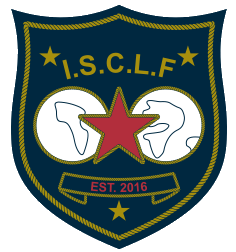1958 World Championship - San Diego, CA
The following results are from the Star Logs. In common with the early Logs from 1950 through 1976 both yacht numbers and names were given but starting with 1977 frequently only yacht numbers were given. The last time both yacht numbers and yacht names were given was 1989. In later years sometimes fleet designations were omitted. In these cases, some of the more obvious fleet designations were supplied. Also, from time to time only last names were supplied. First names, where known, were added.
1958 WORLD'S CHAMPIONSHIP - SAN DIEGO No. Yacht Skipper Crew Fleet Daily Places Pts. 3850 Nhycusa Bill Ficker Mark Yorston NH 1 2 1 3 10 108 3496 Perseverance Chick Rollins Wm. Pickford Mis 4 5 3 1 12 100 3867 Dingo Ding SchoonmakerMalin Burnham FIS 6 3 11 6 1 98 3741 Glider Richard Stearns Gary Comer WH 2 8 7 8 5 95 3877 North Star III Lowell North James Hill SDB wdr 4 2 2 3 89 3376 Kurush V C. de Cardenas J. de Cardenas FdeH 5 1O 1O 4 7 89 3740 Star of the Sea Joseph Duplin Ross Sherbrooke WS 3 1 4 22 9 86 3913 Lindoya C. W. Lyon Jr Frank Lyon AH 15 9 8 7 2 84 3382 Frolic Bill Buchan Jr Wm. Buchan Sr PS 12 6 5 14 6 82 3940 Flame C. S. Ogilvy Francis Welch WLIS 7 14 9 5 13 77 3981 Rio Pimm W. von HütschlerJim Reynolds RdeJ 10 15 12 9 8 71 3879 Vice W. Bennett Robert Halperin JP 8 11 wdr 12 14 55 3871 Shrew Wllliam Parks Bud Wenzel SLM wdr 7 dsq 10 4 54 3711 Music II P. Schoonmaker Chris Sawyer WSFB 11 19 14 15 15 51 3938 Good Grief Tom Blackaller Al Nelson Rich 9 17 13 wdr 11 50 3848 Creepy II Foster Clarke Roy Cole CoH 14 16 6 16 dnf 48 3533 Desiree Cy Gillette R. O. Mahan HI 17 21 17 11 18 41 3406 Warrior Frank McCarthy Frank Rollins BH dnf 13 dsq 13 16 33 4048 Wahoo Barton Beek Seymour Beek LB 13 18 dnf 19 17 33 3455 Waterwitch Harry Uhler Herbert Jordan W 16 22 15 21 19 32 3897 Nausikaa Carlos Braniff Javier BelazquezPM 18 20 16 20 21 30 3890 Dangerous Daniel Hubers Paul Smart NCB dsa 12 wdr 17 20 26 3929 Espuma del Mar Daniel Camejo Peter Camejo LMF 19 23 18 18 22 25 1115 Whispering Wind F. Bulloch Jr J. M. Jordan Mis dnf dns dns dns dns 0
1958 WORLD CHAMPIONSHIP - San Diego, Regatta Report
from the 1959 February Star Class Log

Yachtsman: Bill Ficker's NHYCUSA- the Newport fleet's first
World Champion since the "Hook" Beardslee - Barney Lehman era.
A short history of Star Class World's Championships sailed on the U.S. West Coast, written for last year's championship program, ended with the conjecture, "Perhaps 1958 begins a new era of West Coast Gold Star supremacy". The writer of that article became a truer prophet than he knew, at least for one year, when two Californians, Bill Ficker and Chick Rollins, finished one-two in the 1958 series.
William P. Ficker, Jr., of Newport Harbor, California, is by no means unknown to Star sailors; but as is often the case when a new World's Champion is crowned, the reaction of many was "I didn't realize he was as good as that". The thirty-year-old native of California has been sailing Stars since he was eighteen. In 1954 he won the Blue Star of the Fifth District sailing the old Stormy, No. 1560, a feat worthy of more recognition than it received at the time, In 1957 he was runner-up to Lowell North in the Silver Star Championship of North America, sailed at San Diego with a fleet of twenty-five experts competing. And when North went on to win the World's at Havana, Ficker was fifth, this time in a fleet of thirty-five. His World's Champion crew Mark Yorston did not sail on Nhycusain Havana, but he did sail on her for most of the seasons of 1957 and 1958, including the 1957 Silver Star series.
When North fouled out of the opening race of the 1958 World's, Ficker and Yorston became the immediate favorites to win the event. Perhaps they should have been the favorites any way. Nhycusa had had a better record than North Star III during the early season races, and had won handily the only event in which both boats had competed; and Nhycusa also won the tune-up race, sailed two days before the World's started, by a margin of minutes. Practically the entire World's Championship fleet competed in that event, sailed over the course and under the conditions that they were to encounter all week.
Charles de Wolf Rollins, who with William Pickford crewing was the 1958 runner-up, had been sailing Stars for more than twenty years. He started his yachting career in the original home of the Stars, Western Long Island Sound. The records show that the first Perseverance, No. 912, was runner-up to Frank Campbell's Rascal in the 1936 championship of that fleet. Later Rollins moved to California, where he has been sailing Stars intermittently since World War II, more seriously during the past three years. In 1956 he was third in the Fifth District Blue Star and won the Newport Harbor Fall Gold Cup.
In 1957 he won the Pacific Coast Yachting Association Championship, but failed to show up well in the North American series. After a strong start in that event with a second and a fourth he was unable to maintain the pace and finished the series in eighth place. In 1958, sailing a new Perseverance (No. 3496, formerly George Fleitz's Wench V), it was a different story as Rollins put together the best series of his career for an easy second in the Gold Star event.
After four races, barring accidents, Nhycusa had the series won. With two firsts, a second and a third she held a six point lead over Perseverance's 4-5-3-1. It was Ficker's obvious task to cover Rollins in the final race, which he did quite successfully even though it dropped him to tenth place, Rollins finishing twelfth. Both skippers badly overstood the first mark in that race and were unable to recover; but they didn't have to. James M. (Ding) Schoonmaker, from Fishers Island Sound, Florida, sailed his Dingo to series third, partly by virtue of a brilliant finish after a good but undistinguished showing earlier in the week.
Dingo entered the last race standing fourth in the point score, one behind Richard Stearns' Chicago entry, Glider. But Schoonmaker found that elusive first mark first (except for Walter von Hütschler, who made a habit of rounding first marks in the lead in this series), and romped on to win the race. Stearns, who finished fifth, had to be content with series fourth. Actually Glider had the most consistent record of all, never finishing below eighth, a feat not matched by any other entry.
Fifth in the series was Lowell North's defending champion, North Star III, which staged a fine recovery after her opening disaster and finished 4-2-2-3 in that order in the remaining races. What the series would have been like with North Star a contender is anybody's guess. It is one of the unanswerable "ifs" of the year. Sixth (actually tied with North Star on points) was Charles de Cardenas, whose Kurush V was always in there fighting in weather which was mostly lighter than the double World's Champion likes.
Seventh was Joseph Duplin's 1956 Atlantic Coast Champion Star of the Sea, the boat that created a sensation at Havana in 1957 when she entered the last race of the World's Championship one point out of first place and finished third in the series. Duplin won the second race of the 1958 series and remained second in the score until after the third race. But in the fourth race Star of the Sea met disaster when a chainplate pulled out, leaving the mast wholly without support on the starboard tack. She finished twenty-second, but only the quick thinking of crew Ross Sherbrook enabled her to continue in the race at all.
Sherbrook tied a line to the dangling chainplate, let it around and under the outside of the hull, up the port side and thence to the jib winch where he took a strain and secured it. It is easy to see, hours later after one has been towed home disabled, how a breakdown might have been repaired. It is not so easy to appraise a dangerous situation when every wave threatens to take out the rig, decide instantly what has to be done, and do it. It was not a spectacular maneuver, and it saved them only three points and one series place; but it was nevertheless the outstanding bit of seamanship of the week. The chainplate, including a gaping hole in the deck, was expertly repaired that night in an incredibly short space of time by the wizard Eichenlaub. Duplin chalked up a surprisingly similar record at the North American Championship the following month when he entered the fourth race third in the standings, hit a mark, and again wound up series seventh.
Before the series started, as boats rolled in from all parts of the Western Hemisphere, it began to be evident that there would be no European entries. This was a big disappointment, caused no doubt by the great cost in time and money in shipping from Europe the more than 6,000 miles each way. The total entry list was twenty-four, small in comparison with World's Championships of recent years, but still the largest number ever to have assembled for a West Coast Gold Star series, of which this year's will be the tenth.
The San Diego Yacht Club and the San Diego Bay Fleet put on a fine show. Indicative of the thought and effort that went into it was the building by the host club of an entirely new launching and hauling area and the installation of two electric hoists especially for the event. The boats were not hauled every night, although they could have been; instead, to make life easier for the contestants, all the choice slips nearest the yacht club were vacated by their customary boat owners and turned over to the Stars for the week.
The opening ceremonies were impressively assisted by U.S. Navy personnel, including a brass band for the playing of the anthems at the flag raising. This was followed by the Commodore's reception and cocktail party around the swimming pool, in which was floating a fully rigged Star, dressed with flags. Entertainments continued nightly throughout the week. A particularly note worthy occasion was the Wednesday party at the Bali Hai Club. Here the prizes were presented for the first three days' racing, among them the Vanderveer Trophy, which goes to the point leader in the series at this stage.
It was especially appropriate that Glenn Waterhouse, the first winner of the trophy twenty-five years ago, was on hand to present it to Bill Ficker. Waterhouse spoke briefly of the origin of the historic cup. At Southport in 1932 Bud Vanderveer, who had that day won the third race of the World's Championship, was killed in an automobile accident. Waterhouse and two other Star sailors in the car were lucky enough to be thrown clear and were not seriously injured. The next year Glenn Waterhouse won the Gold Star and also the new three-race trophy, which the Vanderveers gave in memory of their son.
The 1958 series was sailed in typical San Diego weather, which means that the wind was light to moderate, never blowing more than fifteen knots, and consistently from the west or northwest. The prevailing direction is so uniform that, for its local races, the San Diego Fleet has a permanent starting mark and a permanent windward mark, which they use for every race, day in and day out. This was not the course sailed during the World's because it is too close to shore; a parallel one was set up each day two or three miles out to sea. There is a current flowing down the coast with the wind, and the conventional way to sail a windward leg is to go inshore as far as possible, supposedly to avoid the worst of the current. (1959 aspirants note: the same current sometimes operates off Newport Beach; but then again sometimes it doesn't, which adds zest to the occasion and reduces any advantage of local knowledge.)
In 1958 the boys who tacked inshore were fooled about fifty per cent of the time, usually by a windshift to the west which favored the outside boats. As often as not the Defender, Lowell North, who has sailed in these waters all his life, called it wrong and arrived at the weather mark in a lowly position. So, for that matter, did Ficker once or twice, and sometimes Duplin. But these were the skippers who were able to sail themselves out of any holes into which they fell. As Duplin put it, "In order to do well in a World's you have to be going so fast that you can make an occasional mistake and still recover". Bill Ficker was going just that fast.
The new Champion sails an Eichenlaub boat, which he finished beautifully himself, taking all of the winter of 1956-7 to do so. He used Baxter and Cicero sails in this series, a brand new suit, which he tried out for the first time in the tune-up race just prior to the World's. He liked it so well that he used no other sails during the entire series.
Before we leave San Diego we must give credit to the co-Chairman of the event, Tim Parkman and Robert Mann, and their assistant Malin Burnham; and to Bill Severance and his faithful and efficient Race Committee, George Worthington, Paul G. Smart and Dick Hahn. In addition, every member of the San Diego Yacht Club deserves the thanks of the Star Class for the co-operation and assistance, which helped to make the series a success.





